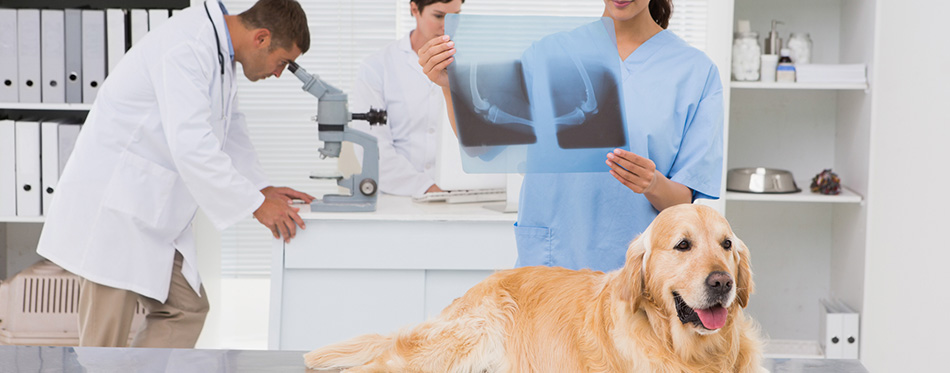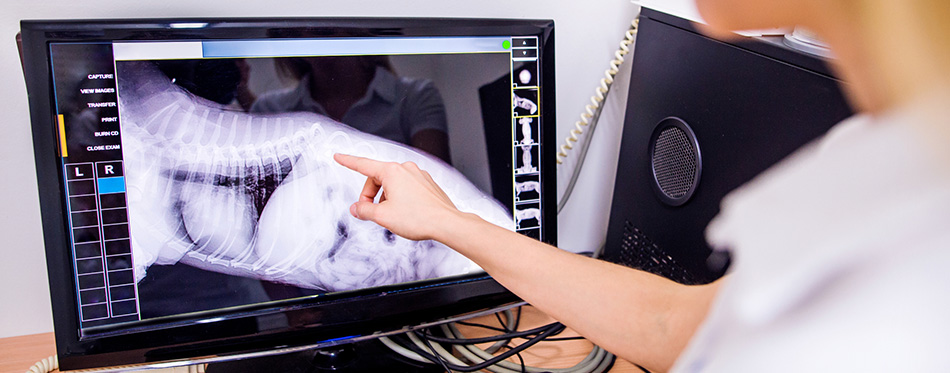Having an injured pet is one of the worst feelings in the world. Not knowing what’s wrong with your pup and your dog being unable to tell you what has happened or where it hurts makes you feel so helpless. However, it’s no secret that the average vet x ray cost isn’t always as honest and open as we would hope – especially if you require more than one, or simply aren’t sure what has caused the problem.
Whether you’re wondering how much it would be to check up on your dog after an accident, or if you’re simply comparing prices, knowing the average cost of dog x-ray can be important to ensure you’re not ripped-off, simply for not knowing any better.

Average Cost of Dog X Ray
It could be that your dog is limping, or you’ve come home to find them whimpering. It could even be something as simple as a change in behavior. Whatever the reason, if you aren’t sure what’s wrong then having an x-ray is usually the first port of call for vets.
Unfortunately, a dog x-ray price can change dramatically depending on multiple variants, including the size of your dog and breed, which area needs to be viewed, how much anesthesia is required (if any), the number of images required, the facility you’re using and the vet themselves.
Take a look at our reviews of Wheelchairs For Dogs and Dog First Aid Kits.
Vet X Ray Cost
The average charge for a vet x-ray will be much cheaper than one taken at an emergency animal hospital. Generally, you might find that an emergency hospital will often charge twice as much and, while the reasons for this cost is frequently debated among animal lovers, it is unlikely that the price will come down any time soon.
How Much Are Dog X Rays
Depending on the factors given above, the average dog xray price can be between $80 and $400. As you can see, this is a broad figure and can often be higher. However, these are good starting figures and generally what you can expect to pay upfront to your vet, before they will begin the x-ray procedure.
Often, for larger dog breeds, more anesthesia is required, which can bump up the price considerably. Not only due to level of anesthesia used but because a trained professional needs to keep a close eye on your dog while sedated, to keep your pup happy and healthy during their artificial sleep. The added cost of this anesthesia can vary between $40 for smaller dogs, right up to $220 for larger breeds.
Remember that the price of these x-rays for your dog can be PER image taken, and often don’t include the price of the vet and office visit itself. That’s why it’s important to speak with your vet and try to get as much detail about what price is expected, before you agree to their terms.
All of this detail isn’t intended to scare you. Indeed, it’s important to be completely clued-up where possible, when it comes to health decisions you make on behalf of your dog. By knowing these prices, you can discuss your options with your vet. It’s also wise to invest in pet insurance, so you can help offset the costs when you need it the most.
When Are Dog X-rays Needed
In the same way that us humans can require x-rays for everything from detecting lung infections through to checking for broken bones, dogs can require a visual insight into their body for a huge variety of problems. You can, however, help cut down on diagnostic costs by giving your vet as much information as possible during the initial appointment.
Remember, vets are also trained to know what is most likely to be the problem, due to their own experiences with animals. For example, it’s not entirely uncommon for German Shepherds to have hip problems, so you’ll find that skipping over the blood test and going straight for the hip x-ray can help you – not only be keeping the costs down, but by shortening the time between diagnosis and treatment. It will also help that the vet will know, automatically, which angle is best to get the right view for hip problems and you won’t need to pay out for extra x-rays around the leg areas, as these are unlikely to be the source of the problem. Of course, all animals and all vets are different, so this is not always the case.
No matter what, you should always trust that your vet wants the best for you and your dog. So, if your vet says that they would like to take a look at your pup via an x-ray, there’s usually a good reason to do so.
Check out our guides on Glucose Monitors For Dogs and Dog Knee Braces.

What to Expect During a Dog Xray
Generally speaking, owners don’t need to do much when it comes to giving your dog an x-ray, as your vet and their nurses will often be able to handle everything themselves. Bear in mind that dog x-rays are a common diagnostic tool, so taking an x-ray of your canine companion is usually a quick, routine appointment.
Your dog will likely be a little woozy after their stay, as they will likely have been sedated for their xrays. The reason for this is simply so that they don’t panic while the machine whirrs, causing them to move and possibly hurt themselves or others and therefore so that your dog feels less stress than they would if they were awake. It also ensures they are still enough that the x-ray can clearly define the problem area.
The process itself should take no longer than 10 minutes, and the processed images are usually ready within an hour of finishing up. Sometimes, you will be able to wait in the surgery for your dog but, more often, the vet will recommend that you go and grab some coffee or head home for a while, so they can keep an eye on your dog as they come around from the sedatives.
Don’t worry – despite the expense of the average dog Xray price and their feeling a little drowsy – an x-ray is usually a pain-free experience! If you’re ever worried about the average cost of a dog x-ray, do talk to your vet about possibly payment options, if you haven’t been able to get pet insurance, yet.

